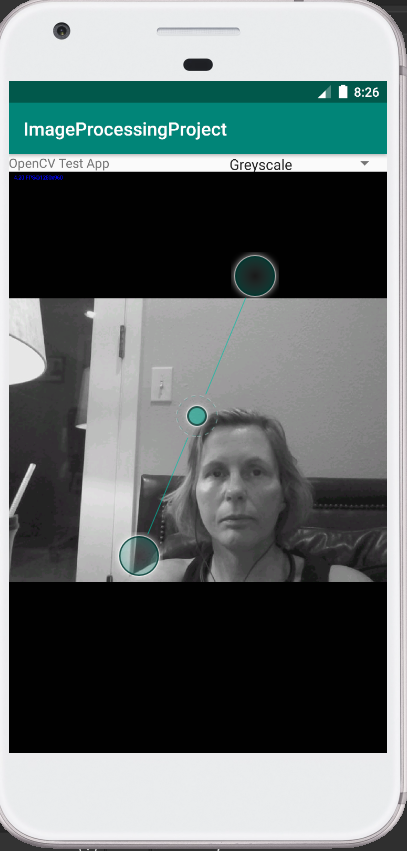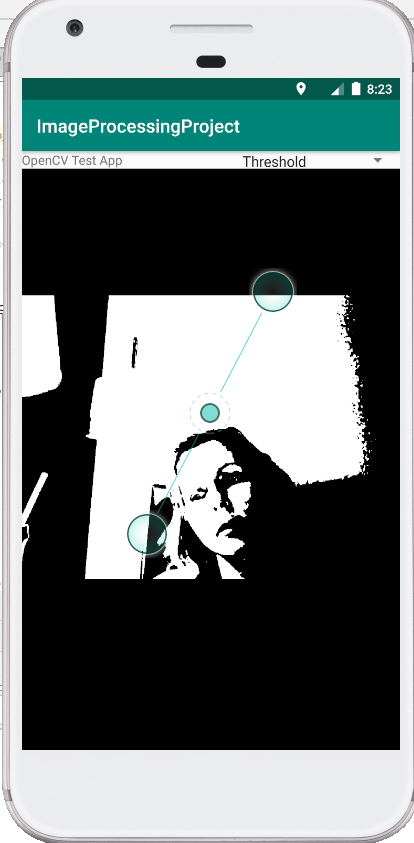Example OpenCV Android app with Image Processing
first fully read creating OpenCV Android app project
Activity Interface in XML
...... includes a SPINNER and a TEXT
<?xml version="1.0" encoding="utf-8"?>
|
 |
strings.xml file (used to create string-array for an adapter to fill in spinner choices)
<resources> *****whatever you have currently in this file****** ADD THE FOLLOWING |
Code - Activity File (get zip of project --but, your verison of Android SDK may be different so may not be able to use directly)
NOTE: items in yellow will be different for your project
NOTE: items in blue are new code from our previous simple app that only displayed image
package com.grewe.ilab.imageprocessingproject; { |
Random selected = Output sometimes grey sometimes color (note is emulator running with emulated camera)

Greyscale selected =

Threshold selected=

